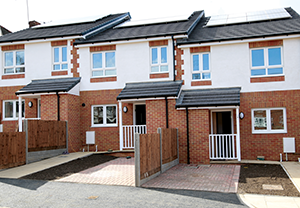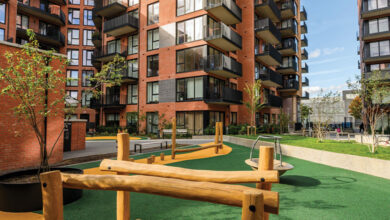Fianna Fáil’s roadmap
The party proposes State grants to help new buyers secure deposits and more flexibility for local authorities.
‘Supporting Home Ownership’ – Fianna Fáil’s national housing roadmap – emphasises that the “right to own across all generations of Irish society is good for families and communities”. The party’s headline commitments for 2016-2021 are to:
• provide 155,000 new homes;
• help 80,000 people to buy their first home;
• create 80,000 jobs; and
• create 20,000 new places for local authority home owners.
Home ownership will be underpinned by a first time buyers saving scheme, providing a 25 per cent top-up for special deposit savings accounts. The top-up will be subject to a €5,000 cap as part of a monthly saving scheme over a minimum of four years.
A total of 2,100 ‘starting out homes’ will be allocated to first-time buyers aged under 40 and funded through the saving scheme. More mixed tenure housing estates are envisaged, delivered through a new right to buy – with a 3 per cent per annum discount on the property valuation up to a maximum of 10 years. The total discount will therefore normally be capped at 30 per cent although local authorities may have the flexibility to offer 40-60 per cent discounts for low income householders.
Dividends from house sales will be earmarked for further social housing construction programmes and also compensation for voluntary housing associations for the loss in value from their tenant purchase schemes.
Fianna Fáil will legislate to remove the bank’s veto in personal insolvency cases. The party is also critical of the Central Bank’s new lending criteria, especially the “onerous” 20 per cent deposit rate. The bank is independent of government but Fianna Fáil ministers will request an annual review of the policy’s effect on the market.
Credit unions could compete more effectively with banks by adopting the Canadian model i.e. a central lending body funded by local credit unions. This could raise an additional €4 billion, facilitating around 20,000 new mortgages.
Private house-building will be directly funded through the Strategic Investment Fund. A vacant site levy will incentivise development in towns and cities and local authorities will be given more flexibility to convert empty commercial units into housing.
Importantly, development plans should only facilitate house construction “where sustainable demand is confirmed”. The Planning and Development Act 2000 will be amended to protect the right of rural dwellers to own a home in their own community.
Older people in large, under-occupied dwellings who wish to move into smaller-sized accommodation will be exempted from stamp duty and local property tax (for five years) on the purchase of their new home.
€4.5 billion will be allocated for social housing construction over 2016-2021: financed by €630 million per annum from the exchequer and €270 million from the Strategic Investment Fund and other sources. Part V (within the 2000 Act) will be retained to promote mixed tenures with a minimum of 20 per cent of new developments allocated for social and affordable housing. Drawing on the UK’s experience, Fianna Fáil will develop housing association bonds to “encourage bolder financial thinking” and reduce the State’s costs.
NAMA has identified 4,319 potential social housing units within its stock. Special transfer units will be set up in each local authority to release these properties. In addition, housing assistance payment will be devolved to local authorities which will have more flexibility to vary rent limits.
A new ‘green deal agency’ will use EU and private finance to run a national retrofitting scheme.
The party also plans to introduce a ‘social contract for the elderly’ which will guarantee a right for over-65s to either stay in their own home or be accommodated in an alternative safe, secure and suitable home. Housing adaption grants (€23 million per annum) will be restored and a new ‘fair deal’ scheme will be considered, to promote independent living in later life.
“Fianna Fáil,” environment spokesman Barry Cowen contended, “will build more homes, create more jobs, help more first-time buyers, empower more local authority tenants and secure more elderly people in their homes than any other party.”






